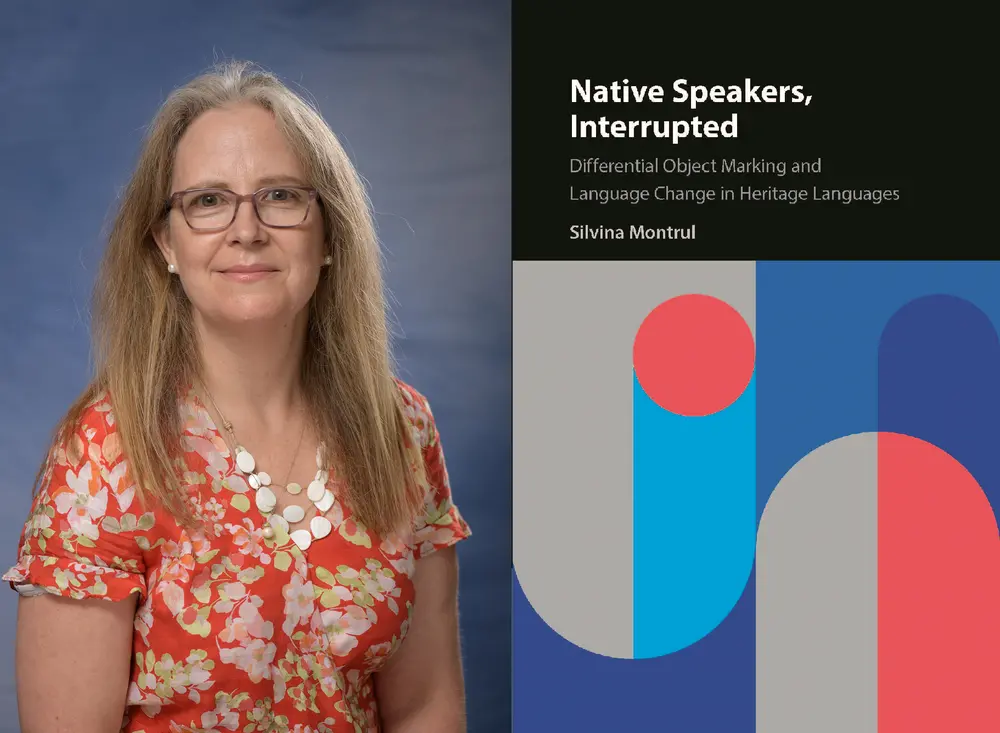
Childhood is a key time when it comes to maintaining a heritage language—a language spoken at home by bilingual children of immigrant parents.
A new book by Spanish and linguistics professor Silvina Montrul brings together three such languages—Hindi, Romanian, and Spanish—spoken in the U.S. and demonstrates how heritage speakers can end up driving language change as they try to reconcile their heritage with their environment.
“Many heritage speakers feel that their language is not up to standard,” said Montrul. “This work really shows how and why [that happens.]”
“Native Speakers, Interrupted: Differential Object Marking and Language Change in Heritage Languages” (Cambridge University Press, December 2022) uses a well-studied grammatical phenomenon—the erosion of Differential Object Marketing (DOM) in heritage speakers—to do this. In Spanish, this is the omission of the preposition a in front of animate, specific direct objects, i.e. Juan vio María instead of Juan vio a María. In Romanian, the marker is pe, and in Hindi it is -ko.
Montrul studied this phenomenon in two types of heritage speakers: those who were born in the United States and were exposed to the heritage language and English at the same time, and another group who came to the United States later and had a longer period of monolingual development in their countries. She also tested the parents of heritage speakers to compare generations, all with the help of her students.
She found that while heritage speakers of all three languages tend to omit the marker, there was more language change among Spanish speakers.
“It has to do with the amount of people who speak Spanish in the United States,” said Montrul. “We have many more Spanish speakers in the United States, but it looks like these smaller communities [that speak Hindi and Romanian] maintain the language more.”
According to Montrul, an explanation can be found by looking at the parents, but not for the reasons some might think.
“I do debunk the idea that the parents are the ones who are transmitting this omission of DOM to the children. I think it’s the opposite. It’s that the children are changing the language of [their] parents… and it’s not the quality of the input they receive from their parents [that’s causing this but] the quantity of the input. It’s the fact that they are not using the language sufficiently, especially during childhood, which is the most important time for language development, and they’re not going to school in the heritage language.”
Silvina Montrul
This idea that heritage speakers become agents of language change when certain conditions are met is at the heart of Montrul’s book. While the publication is focused on the study of a single phenomenon, it also discusses the implications of the findings for the language education of heritage speakers in the United States.
“The message society sends is not the best, because it tells [heritage speakers] that they need to focus on English in order to be successful in the United States," said Montrul. "The message in my book is that maintaining your Spanish does not take away from your English, but focusing on only English takes away from your Spanish.”
In some cases, this can result in a near loss of the language and, consequently, problems communicating with family members, or the inability to pass down family values and traditions.
Montrul said it all comes down to a poor understanding of bilingualism.
“There’s [this idea] that if you’re bilingual, you’re going to be different,” she said. “But different isn’t necessarily bad. It’s just different.”
While this study—which is 10 years in the making—speaks indirectly to this message, her next one will seek to reinforce the idea to parents and school administrators through specific data. As for what exactly that will look like, Montrul isn’t sure yet.
“Sometimes the more we learn, the more we know that we don’t know a lot,” she said. “So, the topic is not exhausted as far as I’m concerned.”
Dania De La Hoya Rojas